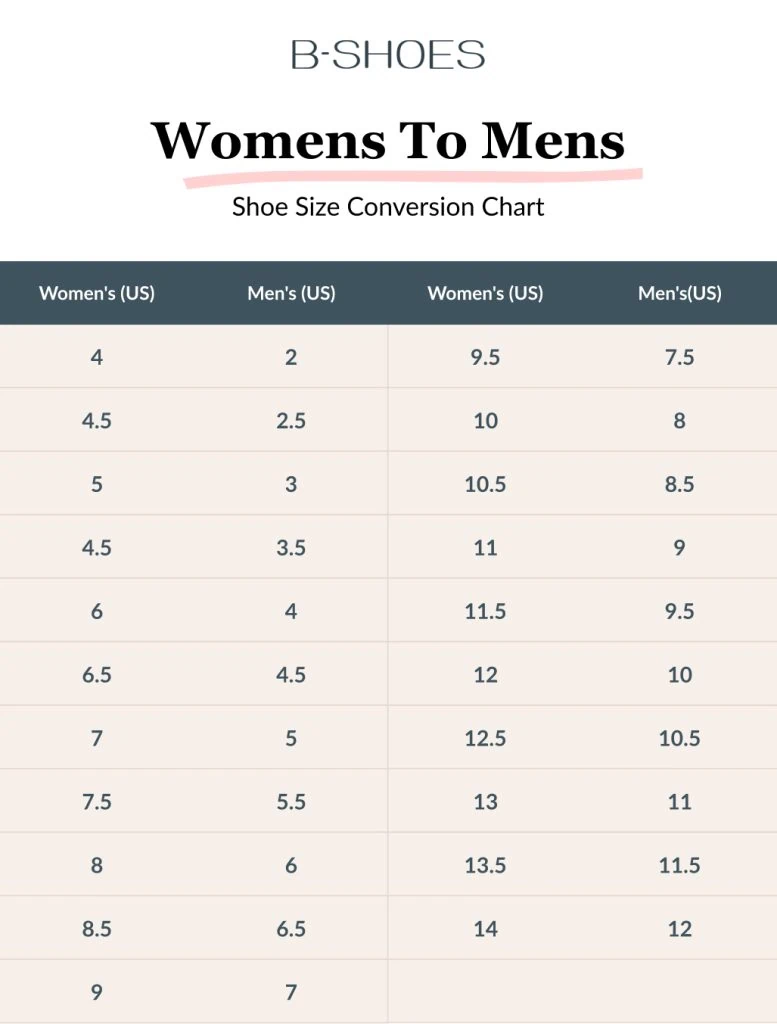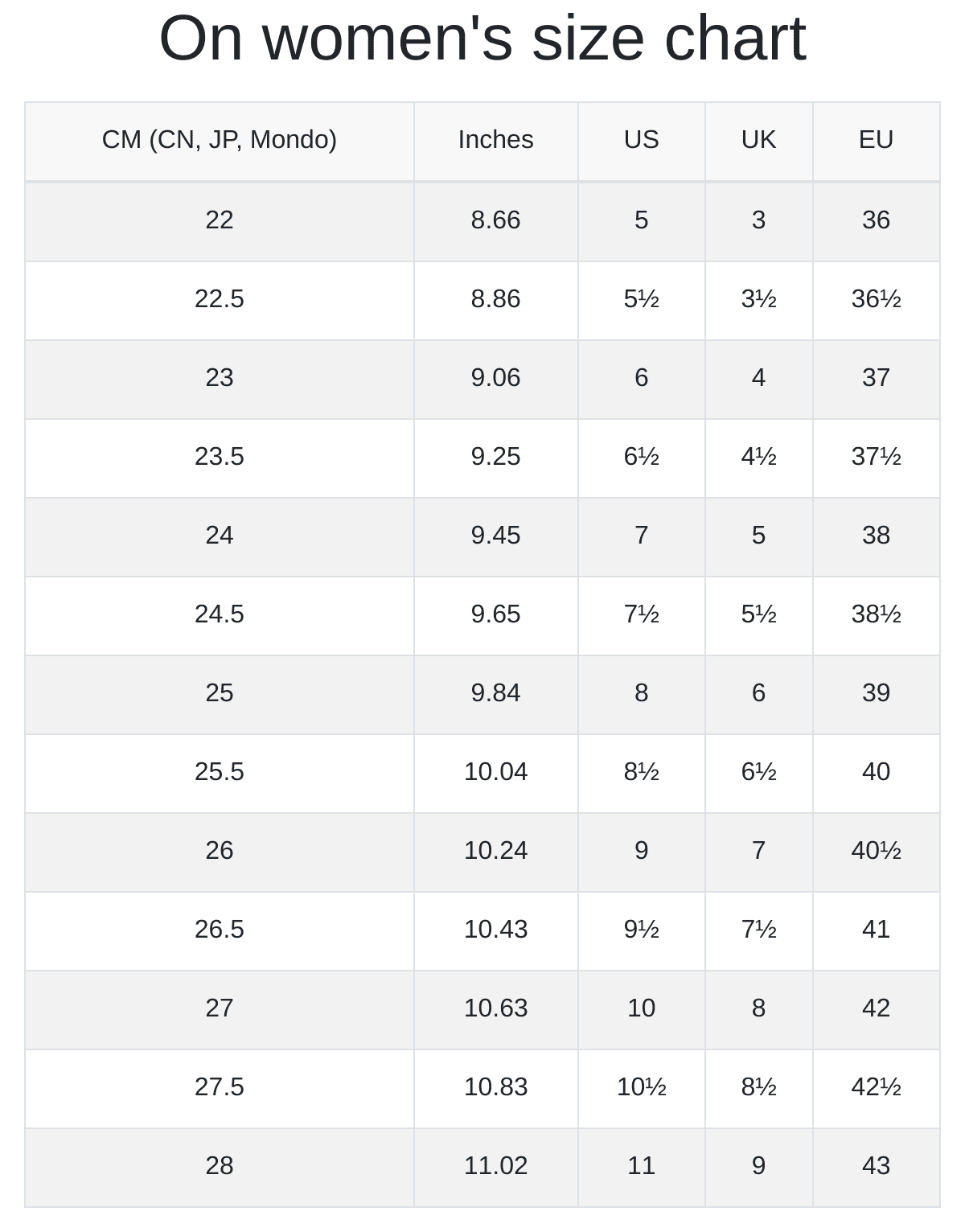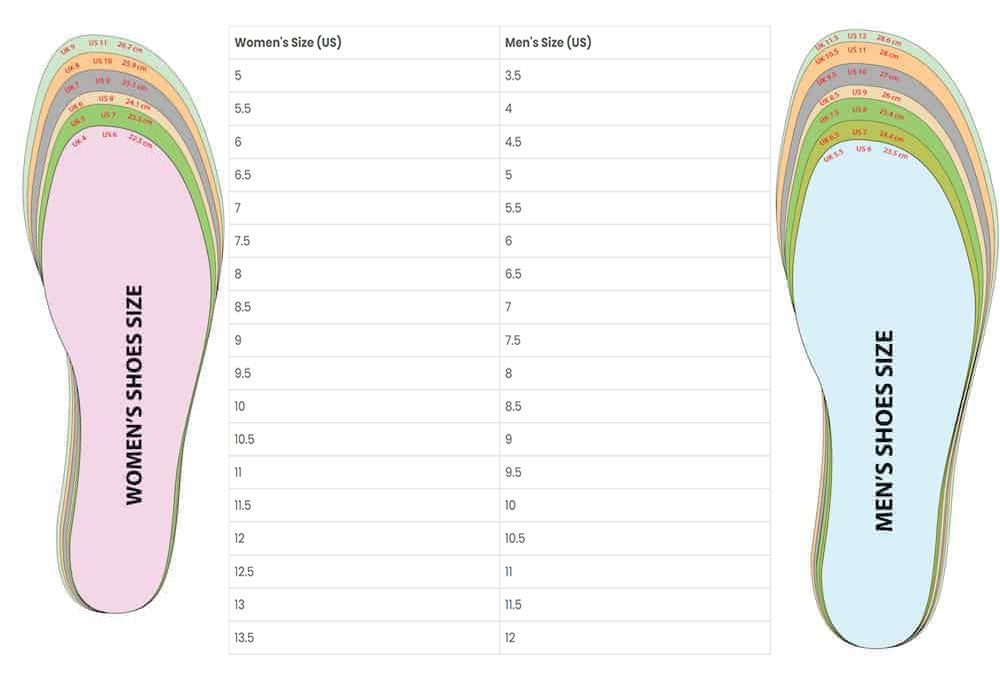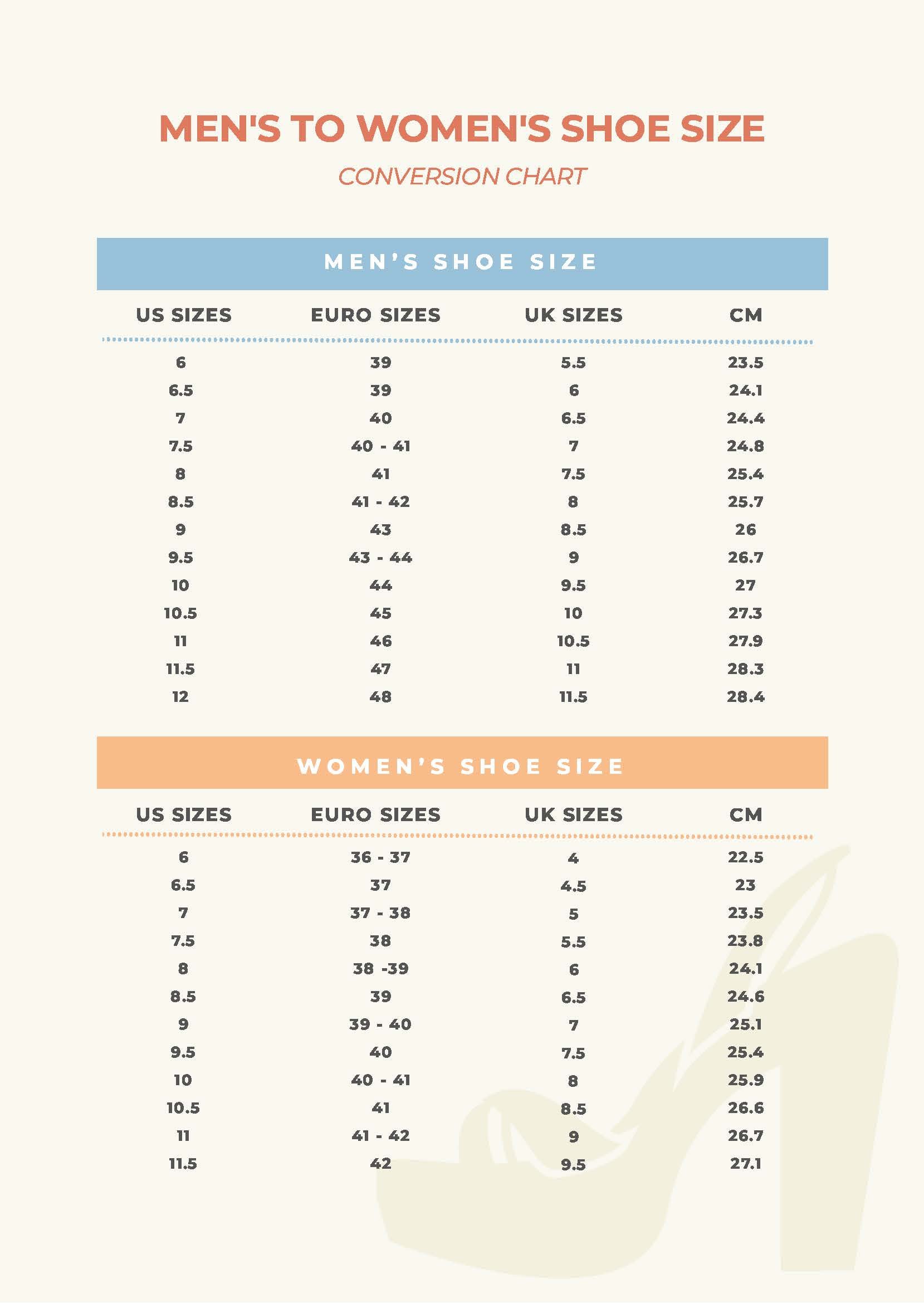The Basics of Women’s Shoe Sizes Compared to Men’s
Shoe size conversion between women and men can be quite a dilemma. Unlike clothing, where sizes can vary widely, shoe sizes have more structured systems. In the United States, the standard conversion is that women’s shoe sizes are typically about 1.5 to 2 sizes larger than men’s sizes. For instance, a women’s size 8 is approximately a men’s 6.5 or 7.
Understanding Shoe Size Conversion
The reasoning behind this conversion lies in the way that women’s and men’s shoes are designed and measured. Women’s shoes are generally manufactured with a narrower width and a higher arch, while men’s shoes tend to be wider and have a flat footbed. Understanding these nuances is essential for finding the right fit.
Quick Reference Shoe Size Conversion Chart
| Women’s Size | Men’s Size |
|---|---|
| 5 | 3.5 |
| 6 | 4.5 |
| 7 | 5.5 |
| 8 | 6.5 |
| 9 | 7.5 |
| 10 | 8.5 |
| 11 | 9.5 |
Cultural Perspectives on Gendered Footwear
In the United States, the concept of shoe sizing can also be linked to broader cultural narratives. For example, women’s shoe shopping has often been associated with fashion and individual expression, while men’s shoes have been more functional. However, the rise of unisex footwear options and the growing emphasis on inclusivity in fashion are breaking down these traditional barriers.
Shopping for Women’s Shoes That Fit Men: Tips and Tricks
If you’re a man looking to buy women’s shoes or vice versa, here are some practical tips:
Know Your Size
Before shopping, use a shoe size conversion chart to determine your size in women’s shoes. Always keep in mind that sizing can vary significantly between brands.
Fit and Comfort
Because women’s shoes are often narrower, it’s crucial to consider the fit carefully. Trying on shoes when possible can save you from significant discomfort later.
Consider the Style
Certain styles may work better across gender lines than others. For example, sneakers or flats may be more accommodating than high heels or booties.

Research Brands Known for Unisex Styles
Several brands nowadays focus on unisex styles, making shopping easier. Brands like Nike, Adidas, and Vans offer a variety of designs suited for everyone.
Pros and Cons of Shopping for Women’s Shoes for Men
Pros
- Broader Styles: Women’s shoes often provide a wider variety of styles and colors.
- Comfort Alternatives: Many women’s sneakers and casual shoes are designed for comfort, which can appeal to men.
- Inclusivity: Shopping in women’s sections can foster a more inclusive environment for all identities.
Cons
- Fit Challenges: Men may struggle with width and arch support in many women’s shoes.
- Limited Sizes: Not all brands will carry extended sizes in women’s shoes.
- Misleading Sizing: Confusion around sizing can lead to purchases that don’t fit well.
Where to Buy Women’s Shoes for Men
Finding the right place to shop is essential for a satisfying experience. Below are some popular options:

Online Retailers
Online shopping has become increasingly popular, offering extensive selections. Websites like Zappos, Amazon, and ASOS provide filters for size and often have return policies that make it easy to exchange shoes that don’t fit.
Local Shoe Stores
Physical stores can offer the benefit of trying shoes on before buying. Department stores like Nordstrom and DSW carry a range of women’s shoes and often have knowledgeable sales staff who can assist in finding the right fit.

Specialty Stores
Some specialty stores focus on athletic or fashionable women’s footwear, ensuring that you’re getting the latest styles that can work for any gender.
Technology and Women’s Shoe Sizing: The Future of Footwear
The shoe industry is rapidly evolving with new technologies that enhance the shopping experience:
3D Foot Scanning
Some retailers are adopting 3D scanning technology to provide accurate measurements for the best fit, reducing the guesswork involved in online shopping.

Augmented Reality (AR)
AR allows customers to see how shoes will look on their feet through their smartphones, minimizing disappointment when they arrive.
AI-Powered Recommendations
AI tools and recommendation engines help suggest sizes and styles based on previous purchases, enhancing the shopping experience.

Frequently Asked Questions (FAQs)
Can women wear men’s shoes?
Yes, women can wear men’s shoes. However, they need to consider size differences and the fit of the shoe.
What is the size difference between men’s and women’s shoes?
In general, women’s shoes are 1.5 to 2 sizes larger than men’s sizes. For example, a women’s 9 is typically equivalent to men’s 7 to 7.5.

Are men’s shoes wider than women’s shoes?
Yes, men’s shoes are generally wider and have a different arch profile compared to women’s shoes, which can affect fit and comfort.
How do I ensure a good fit when buying women’s shoes as a man?
Research size conversions, consider the shoe’s style, and if possible, try shoes on or order from retailers with customer-friendly return policies.